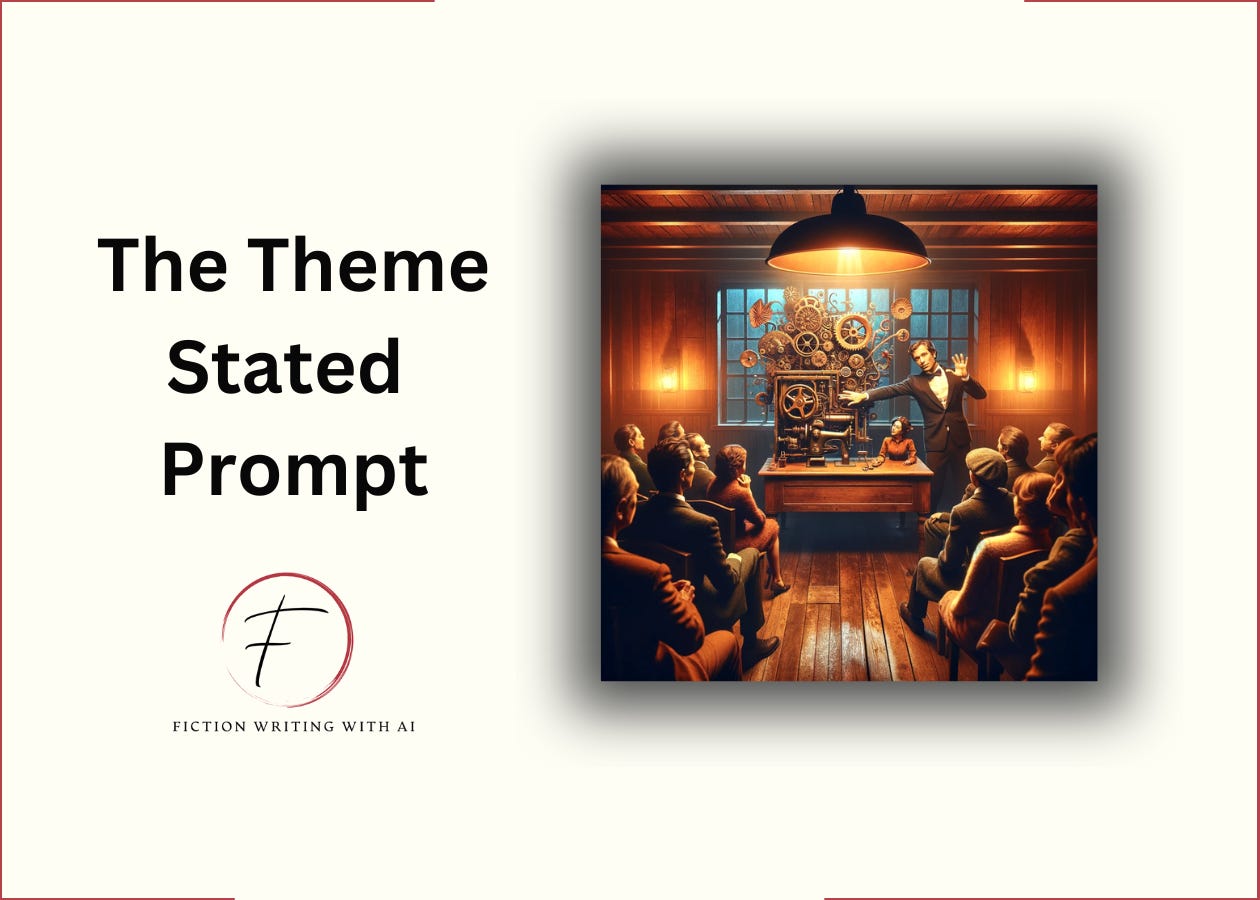Hey there!
Today, we’re going to help you “Show, Don’t Tell” your story's theme in your novel's Theme Stated beat.
In this post, you'll learn:
What “Theme” is
Why it matters to put the big idea in your story early
3 Dos and Don'ts for writing an effective Theme Stated beat
How to show the story's big idea in what people do and say with AI
Let's dive in!
What Is Theme?
Before we talk about the Theme Stated beat, let's clarify what we mean by "theme."
A theme is the central idea, message or insight about life that a story explores. It's what your story is really "about" beneath the surface of plot and characters. The best themes are universal.
Some examples of common themes in literature:
Love conquers all
The corrupting influence of power
The importance of family
The cost of unchecked ambition
The search for identity and belonging
Theme is not the same as subject or moral. "War" is a subject. "War is hell" is a theme. "Be kind to others" is a moral. "Cruelty begets more cruelty" is a theme.
So how do you effectively establish your themes in your story?
This is where the Theme Stated beat comes in.
The “Theme Stated” Beat
The Theme Stated beat is a scene, usually near the beginning of your story (around the 10-15% mark), where the main thematic idea or lesson is hinted at through dialogue or action.
In a 400 page novel, it would fall around pages 40-60.
It plants the seed of what the protagonist will need to learn or realize by the end of their journey.
It’s important because it:
Orients the reader to the story's central message early on
Provides a thematic roadmap for the protagonist's arc
Allows you to explore theme organically rather than overtly preaching
The reader may not consciously register it, but it sets the stage for the thematic work your story will do.
For example:
In The Hunger Games, when Gale suggests Katniss could run away and avoid the Reaping (hinting at themes of defiance, survival, underdogs vs the system)
In The Matrix, when Morpheus tells Neo "all I'm offering is the truth, nothing more" (hinting at themes of perception vs reality, fate vs free will)
In A Tree Grows in Brooklyn, when Katie tells Francie "If you look at [the tree] at a certain angle, you can see that it's crooked. But if you look at it another way, it's straight" (hinting at themes of perspective, finding beauty in hardship, resilience)
The key is that the theme is suggested or implied rather than overtly stated. Restraint is essential because it allows the reader to discover the theme organically through the story, making the thematic realization more powerful and personal.
When the theme is too obvious or heavy-handed, it can disconnected from the narrative, leading to a less engaging reading experience.
3 Dos And Don'ts For Writing An Effective Theme Stated Beat
Now that you understand the function of the Theme Stated beat, here are some key dos and don'ts to help you write yours:
DO:
Suggest the theme through dialogue or a character's actions vs. stating it outright. Show, don't tell!
Tie the Theme Stated into what is actually happening in the scene and story at that moment vs. having it feel dropped in
Give your character's reaction to the "statement" of the theme so readers understand its significance
DON'T:
Have a character literally say the theme of the story in on-the-nose dialogue
Simply drop in the theme without connecting it to the scene, characters and story
Underestimate the power of theme - it's the heart of your story, not just an English class exercise
Let’s put this into practice with AI
Show, Don’t Tell Your Theme With AI
Here's an AI prompt to help you generate an 1,500 word Theme Stated beat (without explicitly stating the theme):
Keep reading with a 7-day free trial
Subscribe to Fiction Writing With AI to keep reading this post and get 7 days of free access to the full post archives.





